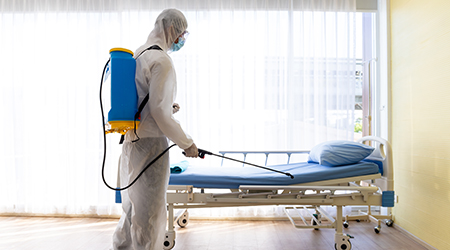While many of the measures to control the spread of COVID-19 in healthcare facilities have involved changes and upgrades of HVAC systems and components, researchers are still learning about the role that sanitization can play in controlling infections.
Recently, two researchers combed through decades of studies regarding the ability of viruses to live on inanimate and inert objects, according to Healthcare Facilities Management. The research provides valuable insight for healthcare. Their findings, “Contamination of inert surfaces by SARS-CoV-2: Persistence, stability and infectivity. A review,” was published in the Environmental Research journal.
The researchers who performed the literature review highlight that as more studies have been released regarding the virus causing COVID-19, it has become evident that close, person-to-person contact and small aerosol respiratory droplets are the main transmission pathways for SARS-CoV-2.
But they also communicate three clear points about surfaces: Surfaces still represent a potential route of transmission even if they are not the main source; the virus can last on different surfaces from hours to days; and appropriate disinfection measures should decrease the risks of COVID-19.

 Building Sustainable Healthcare for an Aging Population
Building Sustainable Healthcare for an Aging Population Froedtert ThedaCare Announces Opening of ThedaCare Medical Center-Oshkosh
Froedtert ThedaCare Announces Opening of ThedaCare Medical Center-Oshkosh Touchmark Acquires The Hacienda at Georgetown Senior Living Facility
Touchmark Acquires The Hacienda at Georgetown Senior Living Facility Contaminants Under Foot: A Closer Look at Patient Room Floors
Contaminants Under Foot: A Closer Look at Patient Room Floors Power Outages Largely Driven by Extreme Weather Events
Power Outages Largely Driven by Extreme Weather Events